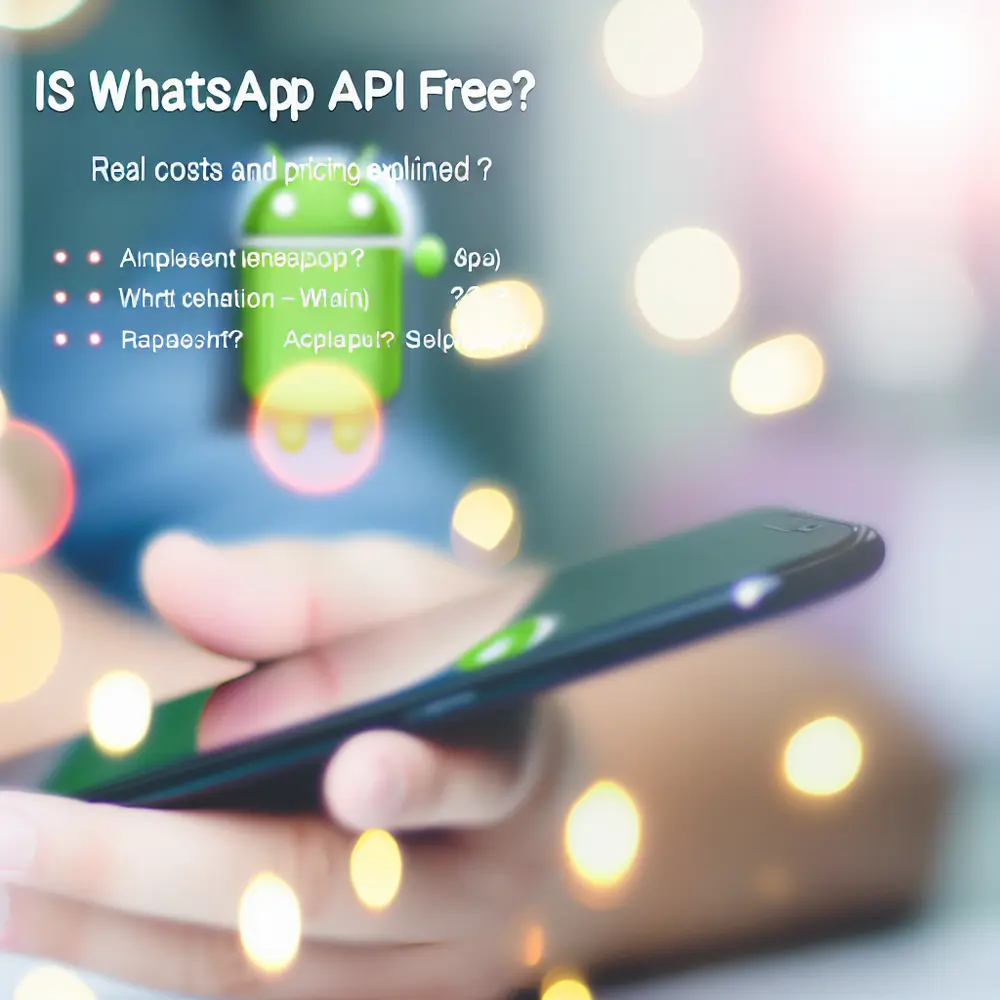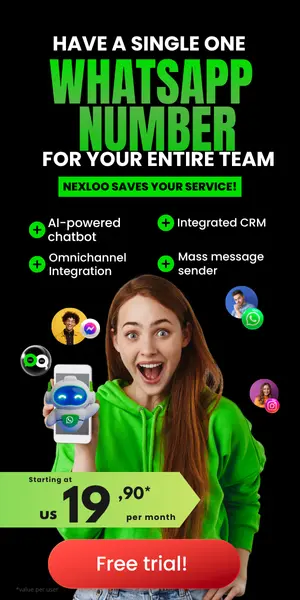Are you considering integrating the WhatsApp API into your business communication strategy? You’re not alone. Many companies today face the challenge of balancing cost and functionality when selecting communication tools. Understanding the WhatsApp Business API cost and its associated advantages is crucial for making informed decisions that enhance customer engagement and operational efficiency.
The intricacies of pricing often leave businesses uncertain about their return on investment. You need clarity not only on the direct costs but also on potential hidden expenses and how these impact your overall budget. This overview will equip you with the information necessary to navigate the financial aspects of the WhatsApp API effectively.
In this article, we’ll explore the WhatsApp API cost structure, dispel common myths regarding its pricing, and provide actionable insights into evaluating free trials and paid alternatives. By the end, you’ll be better prepared to decide if the WhatsApp API is the right fit for your organizational needs.
Understanding WhatsApp API Cost: An Overview
The WhatsApp API cost is vital for businesses considering this communication tool. While you can engage directly with customers and enhance automation, understanding the pricing structure is essential for financial planning. This breakdown reviews costs, potential free trials, and paid alternatives associated with the WhatsApp API.
WhatsApp does not provide the API for free. You incur costs based on your usage, which varies depending on the service provider. The API typically works on a pay-as-you-go model. In this way, you pay for the number of messages sent or received, allowing you to scale your messaging based on requirements without a fixed price commitment.
For instance, the Transportadora Rápida implemented the WhatsApp API to manage customer inquiries, resulting in a 25% reduction in response time. Their pay-as-you-go model enabled them to scale communication effectively while keeping costs predictable.
Free trials may be available through specific providers or platforms offering the WhatsApp API. These trials can be advantageous for businesses wanting to evaluate the service’s effectiveness without an upfront cost. However, keep in mind that these trials often have restrictions on message volume and duration.
The Loja Presente, an online retail shop, took advantage of a free trial offered by a service provider. They successfully assessed the API’s functionality and ultimately decided to integrate it, leading to a 30% increase in customer inquiries handled efficiently.
When fully integrating the WhatsApp API, exploring paid alternatives is beneficial. Various third-party providers offer tailored solutions, including analytics and enhanced security. Their different pricing tiers allow you to select a plan that suits your size and requirements, making cost management more effective.
Comparative Approaches: Free Trials vs. Paid Alternatives
When you explore the WhatsApp API cost, consider the distinctions between free trials and paid options. Free trials allow you to experiment without initial costs but often come with limitations that might hinder complete assessment.
Paid alternatives, while entailing initial costs, usually provide comprehensive access to the API’s full features. For example, Clinica Vida opted for a paid solution that included customer support and advanced analytics. The investment translated into a 40% reduction in appointment no-shows, largely highlighting the value derived from a comprehensive service plan.
When evaluating free trials, understand what features you’ll be able to access and how they align with your business needs. If a trial does not provide critical functionalities, the investment in a paid solution may ultimately be more beneficial.
Is WhatsApp API Free? Debunking the Myths
The misconception that the WhatsApp API is free prevails among many business owners and developers. While the access itself does not incur a direct subscription fee from WhatsApp, you engage a Business Solution Provider (BSP) for implementation, incurring costs for their services.
Consider that BSPs typically charge for integration, hosting, and technical support. So while accessing the API might be perceived as free, coupling it with a BSP often results in costs that you need to factor in.
The Banco Digital Inova took this into account when integrating the WhatsApp API into their customer service strategy. By using a BSP, they streamlined service inquiries without incurring high costs typical of traditional customer service channels, enhancing satisfaction as a result.
WhatsApp API pricing usually revolves around message volume, consisting of Notification and Session charges. Notification messages are business-initiated, while Session messages comprise customer responses within a 24-hour window. Understanding this distinction allows you to accurately estimate total expenses based on expected messaging volumes.
Many BSPs offer free trial options—these allow you to test features before financial commitments. However, careful evaluation of what’s included in these trials is crucial for determining long-term suitability.
WhatsApp API Cost: What You Need to Know
Understanding the WhatsApp API cost is crucial for leveraging this powerful communication tool effectively. Many assume that it incurs substantial expenses, but the reality is layered. You must assess both direct and indirect costs associated with deploying this service.
Costs for the WhatsApp API are not fixed—factors such as messaging volume and chosen service provider significantly influence your overall financial commitment. Smart provider selection becomes essential to manage costs effectively.
A common inquiry pertains to free trials. While WhatsApp itself does not provide a free version, numerous third-party service providers offer promotional periods for you to evaluate features before an investment.
An example is the Agência Conexão, which adopted the WhatsApp API. They utilized a paid solution that improved customer experiences through automation, saving operational costs and reducing response times by 15% while enhancing customer satisfaction.
Beyond direct pricing, businesses must consider total cost ownership when evaluating the WhatsApp API. Setup costs, maintenance fees, and integration tools can significantly impact total expenses; therefore, analyzing all components will provide clarity on its long-term value versus competing messaging solutions.
Case Studies: Businesses That Benefited from WhatsApp API
Numerous businesses have harnessed the WhatsApp API to boost customer engagement and streamline operations. One notable example is the Supermercado Bom Preço, which integrated the API for order confirmations and tracking notifications. This reduced customer service representatives’ workload while enhancing customer experience, reflected in a significant increase in sales conversions.
A travel agency, Viagens Aéreas, adopted the WhatsApp API to send personalized travel packages and reminders. This initiative resulted in a 30% increase in bookings within the first quarter following implementation, confirming the effectiveness of direct communication channels over traditional advertising methods.
A regional bank, Banco Verde, utilized the WhatsApp API for digital customer service, significantly expanding their reach without the typical costs of traditional service channels. This not only improved customer satisfaction but also reduced operational overhead, confirming the cost-effectiveness of the API.
In healthcare, Clínica Saúde Total adopted the WhatsApp API for appointment scheduling and reminders, leading to a 40% reduction in no-show rates. They boosted efficiency and revenue streams by keeping patients informed through a familiar communication platform.
A small business named Artesanato da Nena sold handmade products using WhatsApp to handle inquiries efficiently. Their timely responses and effective usage of the API led to a considerable increase in sales, justifying their investment in the service.
Conclusion: Weighing the Costs Against Benefits
When evaluating the WhatsApp API cost, it’s essential to balance expenses with benefits. The varied pricing structure can initially seem daunting, but understanding the potential return on investment is crucial.
The WhatsApp API offers robust features that enhance customer communication, increasing satisfaction and retention, ultimately leading to increased sales. Weighing upfront costs against long-term benefits often proves the investment worthwhile.
Free trials may be available through various providers, offering a chance to test the API’s capabilities. Assessing integration into existing strategies will help identify if it meets specific business needs before committing financially.
Although paid alternatives exist, they may offer similar functionalities but lack unique features inherent to WhatsApp. Evaluating these options based on cost, functionality, and scalability is essential.
In summary, the value derived from the WhatsApp API should be viewed as part of a strategic decision aimed at enhancing communication and operational efficiency. Though initial investments may seem high, the boost in customer engagement can result in meaningful returns. For more information about the Official WhatsApp Business API and pricing, visit Nexloo.









